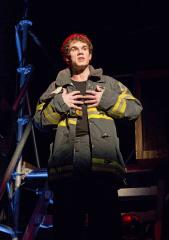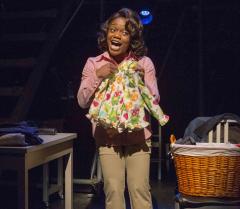
Paulanne Simmons
|
It’s Off to “Work” We Go
"Working"
These days we hear a lot about the importance of jobs, but we don’t hear nearly as much about the value of work. This makes the revival of “Working,” a 1977 musical based on the 1974 bestseller "Working: People Talk About What They Do All Day and How They Feel About What They Do" by oral historian and radio broadcaster Studs Terkel, even more welcome.
The original musical, first staged at the Goodman Theatre in Chicago and then produced on Broadway at the 46th Street Theatre, had a book by Stephen Schwartz and Nina Faso, with music by Craig Carnelia, Micki Grant, Mary Rodgers and James Taylor and lyrics by Schwartz, Carnelia, Grant, Taylor and Susan Birkenhead. The current production is directed by Gordon Greenberg and includes additional contributions by Greenberg and new songs by Lin-Manuel Miranda, A cast of six actors portrays thirty-six characters through the spoken word, song and dance. These characters include laborers and office workers, a money manager and a teacher, a community organizer and a bartender, a housewife and a hooker, a fundraiser and a fireman. Some of these people enjoy their work. Some do not. Some are working in the hope of making a better life for their children. But all are quite sure they are making a contribution to society. The songs in “Working” are all serviceable but not show-stoppers. This is in part because they are so well integrated into the storytelling. “Working” is a heartfelt show that frequently moves the audience. At times we may recognize ourselves or people we know in the workers we see onstage. The stories of Tom, the elder care worker who sings about people who do not remember who he is or who have been abandoned by their own families; and Maggie, a cleaning woman who always wanted to play the piano and write songs but works hard so her daughter won’t be “stuck inside no laundry room” are particularly inspiring. “Working” does not judge the workers or what they do. The writers leave it to the audience to decide whether Mike, the ironworker, or Rex (newly added), the money manager, is making a more valuable contribution to society. |
| museums | NYTW mail | recordings | coupons | publications | classified |


